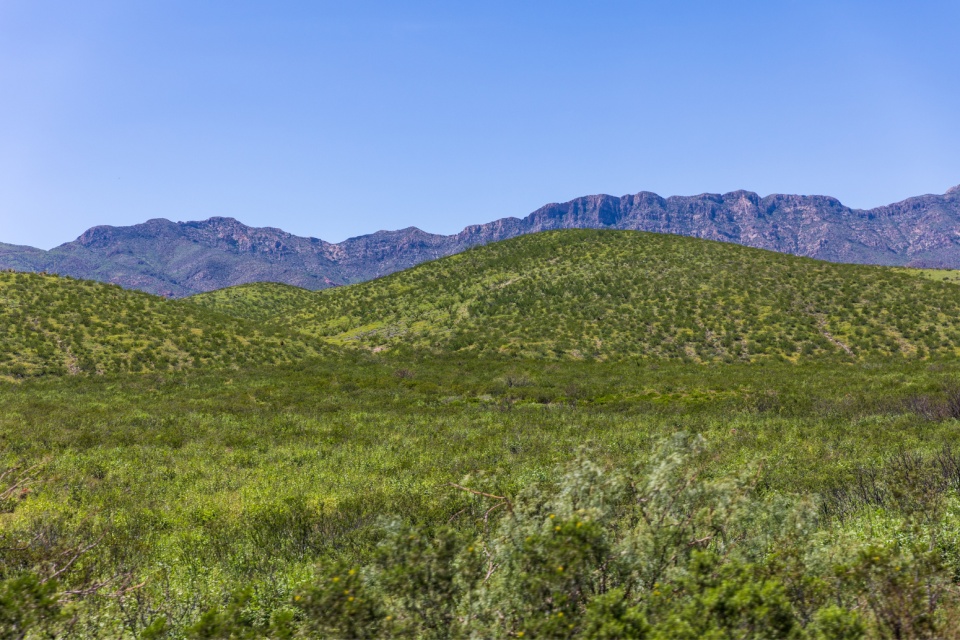President Biden Creates Two New National Monuments from Sacred Spaces to Native Tribes

President Joe Biden signed a pair of legislative bills today naming two new National Monuments — both sacred spaces to Native tribes in each region — during the White House Conservation in Action Summit in Washington D.C.
The legislation will name two new monuments under the Antiquities Act of 1906:
Avi Kwa Ame, a region between the Lake Mead National Recreation Area and the Nevada/California border that serves as a spiritual center for 12 tribes in the region. A national monument designation will help protect rock carvings or petroglyphs, mining and pioneer-era artifacts, sacred burial sites, and threatened wildlife such as the Mojave Desert tortoise and desert bighorn sheep. This site is now Nevada’s fourth national monument.
The Castner Range, comprising roughly 25 percent of the Franklin Mountains east of El Paso. The 7,081-acre area is home to 27 species of threatened or endangered plants and animals, including reptiles, birds, and large mammals, as well as an array of natural waterways and arroyos. The Range is also the ancestral homeland of the Comanche and Apache tribes.
As national monuments, the two sites will receive a range of federal protections, including requiring permissions for archaeological investigations and retrieval, the preservation of retrieved objects in public museums, and authority to determine who can build on the land.
A joint statement issued by the Honor Avi Kwa Ame coalition said the group was “overjoyed” to see the protections become a reality.
“The President’s action today will safeguard hundreds of thousands of acres of cultural sites, desert habitats, and natural resources in southern Nevada, which bear great cultural, ecological, and economic significance to our state,” the coalition writes. “Together, we will honor Avi Kwa Ame today - from its rich Indigenous history to its vast and diverse plant and wildlife, to the outdoor recreation opportunities created for local cities and towns in southern Nevada by a new gorgeous monument right in their backyard.”
Tribal councilman for the Tigua Ysleta Pueblo del Sur Rafael Gomez joined a range of similar sentiments from Castner Range preservationists, whose ranks include the El Paso Community Foundation and the Frontera Land Alliance.
“Castner Range is a beautiful living oasis nested in our beautiful Franklin mountains of our West Texas city of El Paso, this place that means so much to so many, from those who no longer walk among us to those of us existing today and to those who will come tomorrow, may these lands be protected for all to appreciate and be loved for generations to come,” Gomez said in a statement.
Biden’s signature concludes “decades” of work spent trying to preserve both sites by their respective supporters, per a press release from the Castner Range National Monument organization.
According to a history released by the Honor Avi Kwa Ame coalition, Conservation work for Avi Kwa Ame began as far back as 1994, when nonprofit organization The Nature Conservancy bought the Walking Box Ranch to preserve a tortoise habitat on the site. Work expanded from there to eventually include efforts by local grassroots groups and the Bureau of Land Management, which began by acknowledging Spirit Mountain itself as a Traditional Cultural Property in 1999.
That didn’t cover the surrounding area, however. Clark County eventually began folding portions of the area, such as the South McCullough Wilderness area and the Wee Thump Joshua Tree Wilderness Area, into conservation legislation. By 2019, an effort to designate the Avi Kwa Ame region as a national monument was underway, culminating in introducing the Ave Kwa Ame National Monument Establishment Act of 2022 by Rep. Dina Titus (D-NV).
The Castner Range shares a similar story, per a statement released by the Castner Range National Monument organization. Efforts to preserve that area as a national monument began in 1971 when then-El Paso Congressman Richard White began a study of the range’s environmental and cultural significance. That sentiment eventually became a plan for permanent preservation by the early 2000s and a move toward national monument designation by 2015, capped off by legislation proposed by Rep. Veronica Escobar (D-TX) in 2021.
Biden’s signature now enshrines the Castner Range as a monument that will preserve cultural and natural experiences for generations, said Frontera Land Alliance Board Member Marshall Carter-Tripp.
“I am grateful to President Biden for the long-awaited designation of Castner Range as a National Monument,” Carter-Tripp said in a statement. “Castner Range is not only a beautiful section of the Franklin Mountains but a repository of much history, including that of Native Americans who lived in this region before the European settlers arrived. And it is home to a magnificent spread of Mexican poppies in the spring!”
About the Author: "Native News Online is one of the most-read publications covering Indian Country and the news that matters to American Indians, Alaska Natives and other Indigenous people. Reach out to us at editor@nativenewsonline.net. "
Contact: news@nativenewsonline.net
